

European Museum of the Year Award
The Winners 2023
Choose a language:
FOREWORD
EMYA 2023 Winners
Thirty-three museums from eighteen Council of Europe member states took part in this 46th annual competition of the European Museum of the Year Award (EMYA) programme.
A global pandemic and a full-fledged war of aggression in Europe have created unprecedented challenges for developing new museum projects. Nevertheless, EMYA continues to generate a high level of interest among museums across Europe. This continuous interest in the EMYA competition is a testament to its long-standing prestigious presence in the European museum sector.
EMYA provides a forum for celebrating the potential of museums to contribute to social transformation and democratization, by adapting and providing valuable responses to the needs and challenges of contemporary society.
The EMYA 2023 jury had the privilege of visiting all the museums that were nominated for the awards. During their visits, the jury members took a closer look at each nominee’s work, including their unique features, challenges, and accomplishments, and gained valuable insight into the most recent trends and innovative practices in the industry. Many museums among the nominees stood out for their exceptional and inspiring work, which presented a challenge for the jury tasked with selecting this year’s winners. Nevertheless, the jury approached its duty with care and diligence, considering the specific criteria for each award before making the final decisions.
The museums that emerged as winners in EMYA 2023 are remarkable in their ability to achieve excellence across all aspects of their work, while simultaneously pushing boundaries and driving innovation. Through their commitment to openness, accessibility, and participatory practices, they strive to challenge traditional notions of what a museum is and who it serves.
These museums are not content with simply showcasing art or artefacts; they are active agents for social change. They address the complexities of our times, from the political and economic landscape to the challenges posed by environmental realities. They take on active roles in contributing to dealing with the past, such as by getting involved in the excavation of mass graves. They promote dialogue and understanding by erasing the boundaries between different communities, and create holistic platforms for discussions on sustainability.
These exceptional museums provide visitors with immersive exhibits, interactive programs, and community initiatives to equip them with the skills and resources needed to address pressing issues facing society today, such as the erosion of democratic values, social inequality, and environmental degradation. By empowering visitors to think critically and become active participants in shaping the world around them, these museums help create a more informed and engaged citizenry, and contribute to a more democratic and equitable society.
Amina Krvavac
Chair, EMYA Jury
THE EUROPEAN MUSEUM OF THE YEAR AWARD 2023
Valencia, SPAIN
L'Etno, Valencian Museum of Ethnology
 VISIT WEBSITE
VISIT WEBSITE
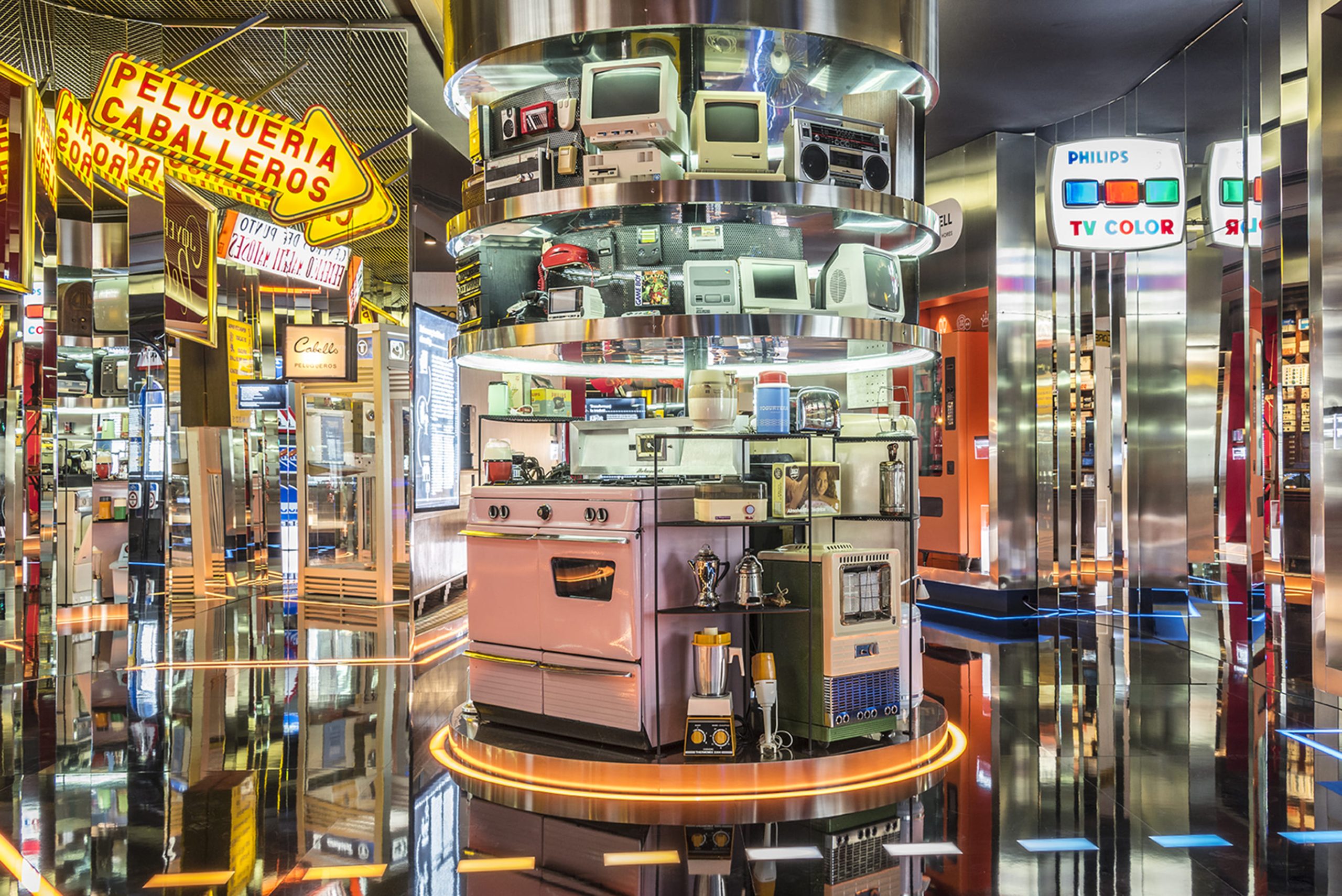
The Valencian Museum of Ethnology was founded in 1982 to explore, preserve and disseminate the region’s cultural history. The dilapidated and abandoned 16th-century convent that used to be the city’s orphanage was transformed into a museum building.
In 2000, the museum began an ambitious redisplay of all its galleries based on its long-standing collaboration with local councils to recover and disseminate Valencian ethnological heritage. The new permanent galleries address Valencia’s cultural ecosystems: cities, farmlands, wetlands, drylands, and mountains. The museum is now not simply about Valencia but has been created with the people of Valencia and does not shy away from courageously challenging the complexities of the social, political, religious, and economic realities, gently dispelling myths through dramatic displays and engaging programmes.
This ethically principled museum is full of heart – but also activism for change – some of which involves the region truthfully facing up to its past to face an uncertain future.
Valencian people, their voices, and personal stories are integral to the museum’s collection, exhibitions, and telling of the region’s histories and traditions.
The museum is firmly dedicated to open and inclusive dialogue and access for all and to revealing, sharing, and talking about ‘hidden histories’ – to local people’s right to know these histories and to sharing local people’s real and often painful experiences.
To contribute to the complex process of dealing with the past, the museum got involved in the deeply controversial nationwide project of mass graves exhumations by forensic archaeologists and DNA analysis aiding identification. Hundreds of objects found in mass graves became part of the museum’s collection. Each of these tells a personal story about the brutality of Franco’s dictatorial regime.
The museum connects the region’s difficult past to the present and future – and the challenges these bring for local people. It explores the growing diversity of the population in recent times, with many immigrant workers present in the city and the region’s resorts – the hidden underbelly of the region’s booming tourist industry. The harsh reality of life for these new Valencians – many of them refugees and underpaid – is also interwoven into the permanent and temporary displays.
L’Etno museum’s vision for stimulating and provoking dialogue on difficult subjects in Valencian life can be seen throughout this extraordinary museum.
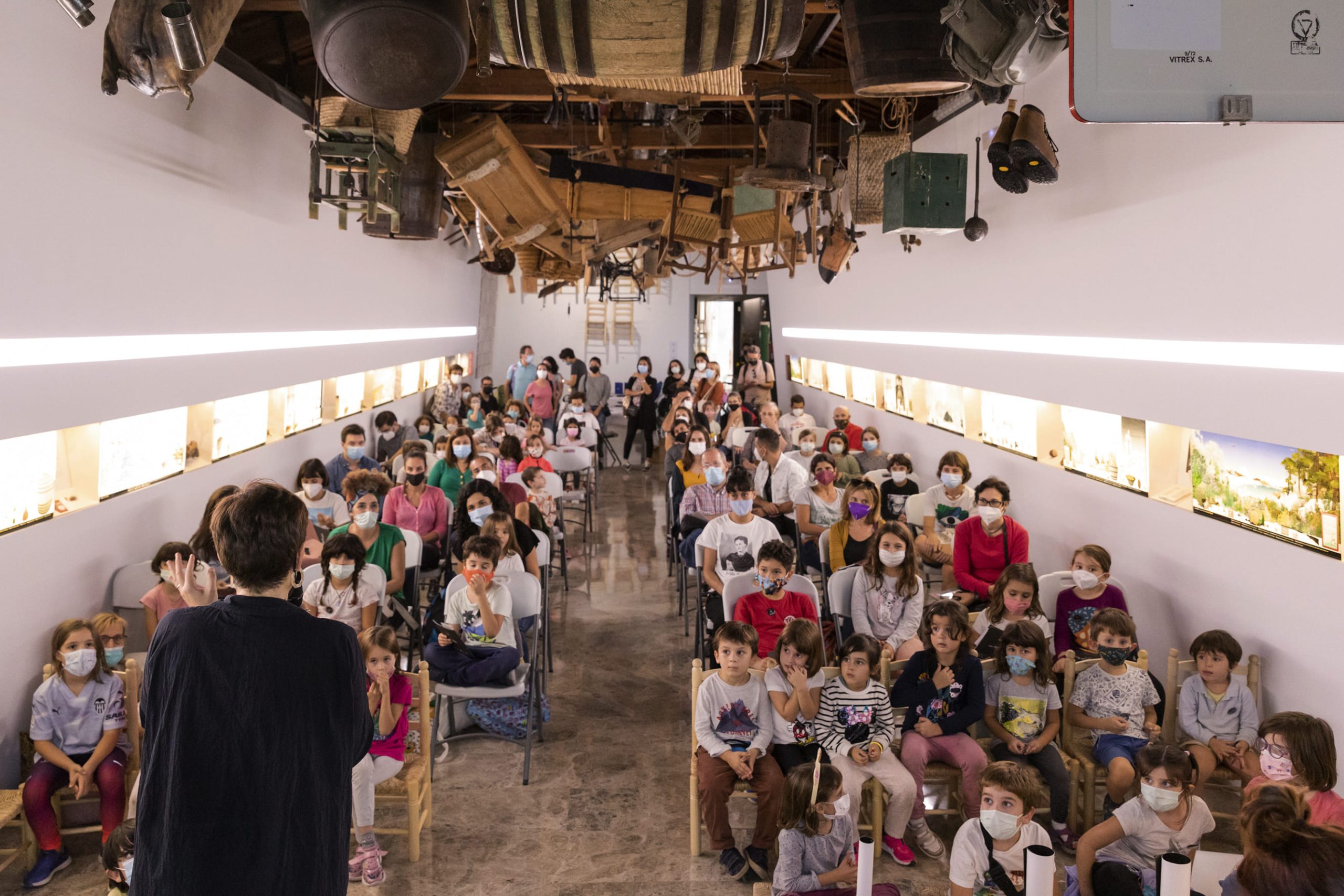
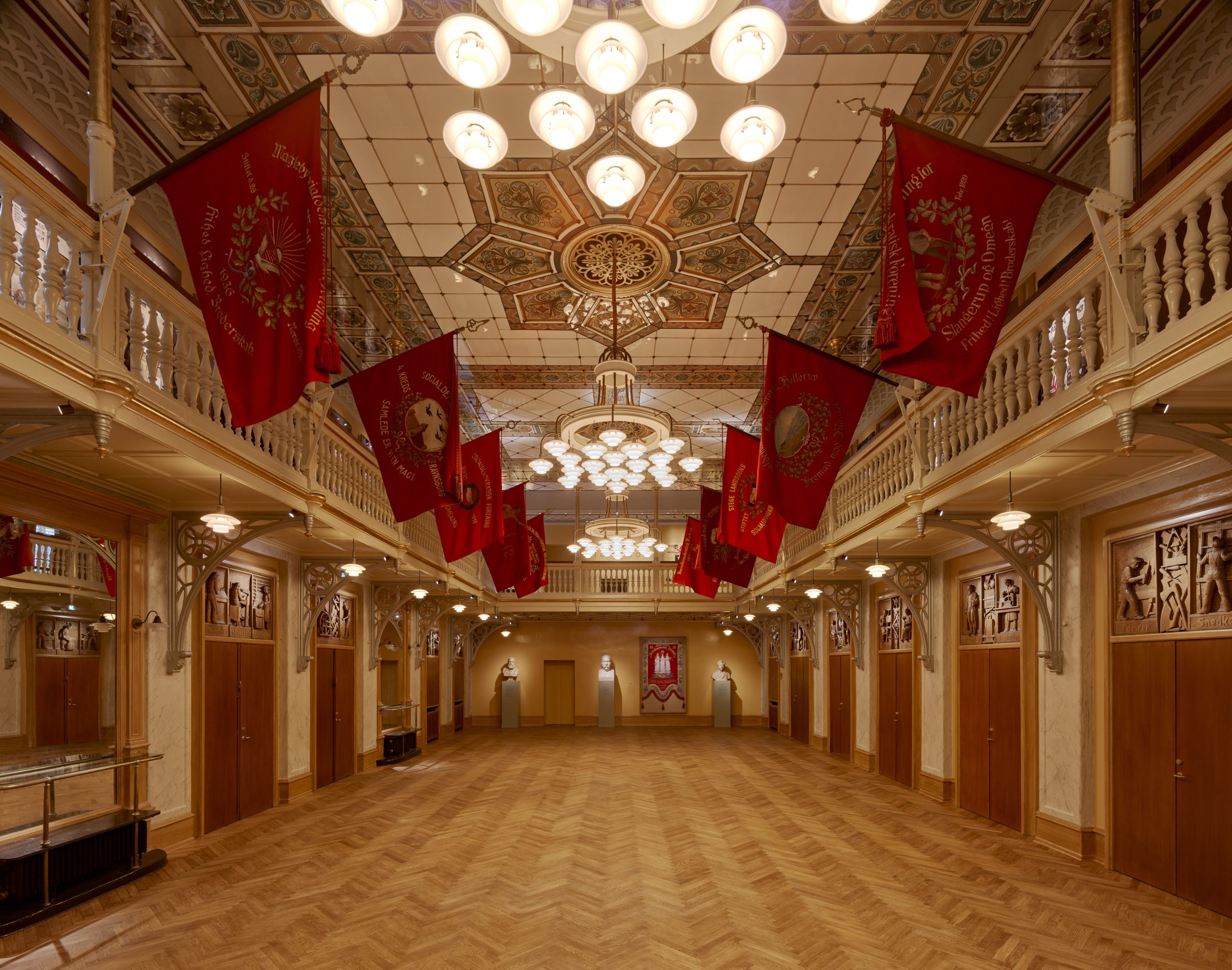
The Workers Museum is located in the centre of Copenhagen, in the 19th-century Workers’ Assembly Building – the first of its kind in Scandinavia and the second oldest of such a hall remaining in the world. The museum connects history to the present day, combining the history of the symbolic building with the labour movement to today’s societal needs supporting people in democratic participation and cultural equality. The recently restored ‘Banquet Hall’ is at the heart of the visitor experience, with its colourful murals, noisy atmosphere, and banners and ceiling decoration, all acknowledging and celebrating workers’ rights. The museum encourages the public to use the hall today as a gathering and working space for activism since the building was always meant as a ‘people’s house.’
The museum focuses on two core topics from workers’ history. On the one hand, it continues its longstanding commitment to present the workers’ daily lives and living conditions, showing improved living standards. On the other, it tells how workers gained a political voice by being members of communities and networks. With these two topics, the museum fulfils its social responsibility to show how we can all find the strength and will to fight for an equal and just society. Its exhibitions and public programmes focus on the importance of dialogue, the future development of democracy, climate change, equal society, the labour market, and political activism.
The museum’s active educational programmes include reading groups, evening schools and parties in cooperation with children’s organisations that support studying, and boot camps with sleepovers during which participants can learn how to start campaigns, organise demonstrations, and create posters. Through different programs and activities, the museum contributes to broadening visitors’ knowledge and understanding of contemporary societal issues and ideas of democratic citizenship and supporting social and political activism today.

THE KENNETH HUDSON AWARD FOR INSTITUTIONAL COURAGE AND PROFESSIONAL INTEGRITY 2023
Istanbul, TÜRKIYE
23,5 Hrant Dink Site of Memory
 VISIT WEBSITE
VISIT WEBSITE
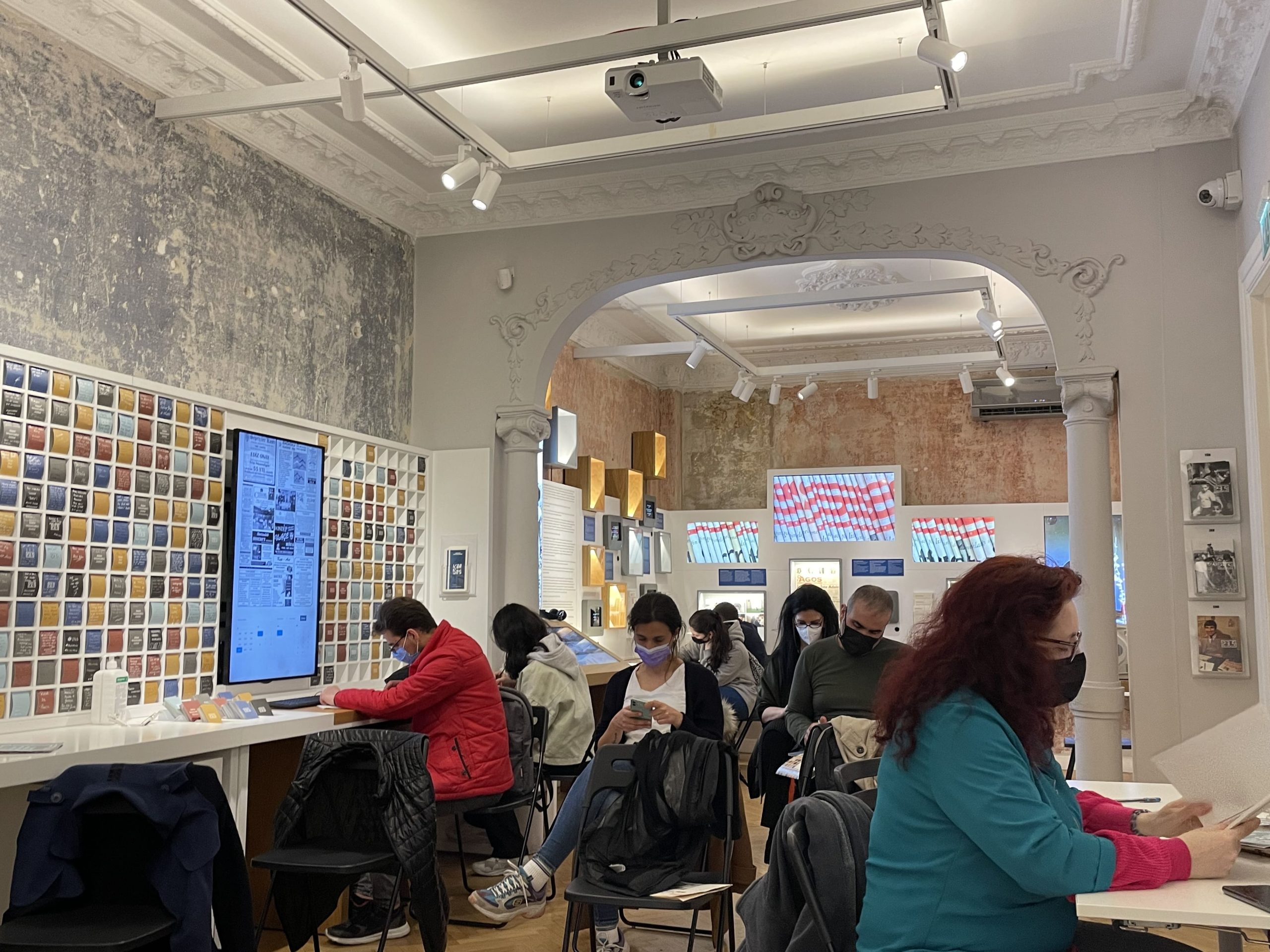
The Hrant Dink Site of Memory is centred on the memory of Hrant Dink (1954-2007), an Armenian-Turkish journalist and human rights campaigner, who was assassinated in 2007 in front of the office of Agos, a bilingual Armenian-Türkish newspaper, of which he was the founder.
The museum is managed as a division of the Hrant Dink Foundation which runs diverse programmes promoting civic engagement. The term 23.5 derives from an article by Hrant Dink in which he explores the tensions and dissonant heritages of 23 and 24 April. 23 April is National Sovereignty Day in Türkey and a public holiday, celebrating the founding of the Grand National Assembly in 1920. 24 April was the day in 1915 when hundreds of Armenian professionals and intellectuals were arrested, marking the beginning of what has been called the ‘historical Armenian tragedy’. At 23,5, the Hrant Dink Site of Memory positions itself midways between these two symbolic dates and two significant political commemorations, and tries to create bridges of understanding between them.
“The 23.5 Hrant Dink Site of Memory is a space that addresses and highlights the importance of the universal values embraced and championed by Hrant Dink — such as democracy, equality, justice, human rights, and freedoms — as well as building a bridge between memory and hope.”
While rooted and anchored in the experience of one particular individual and one particular cultural minority group, the museum seeks to communicate that human rights are indivisible and universal. It aims to shed light on the past while also acting for the future, fostering empathy and mutual understanding, and contributing to social transformation and democratization. In the small 1st floor, former newspaper office in which the 23,5 Hrant Dink Site of Memory is housed, a large and welcoming spirit of dialogue informs and shapes the displays and wide-ranging activity programmes.

THE SILLETTO PRIZE FOR COMMUNITY PARTICIPATION AND ENGAGEMENT 2023
Vani, GEORGIA
Otar Lordkipanidze Vani Archeological Museum of Georgian National Museum
 VISIT WEBSITE
VISIT WEBSITE
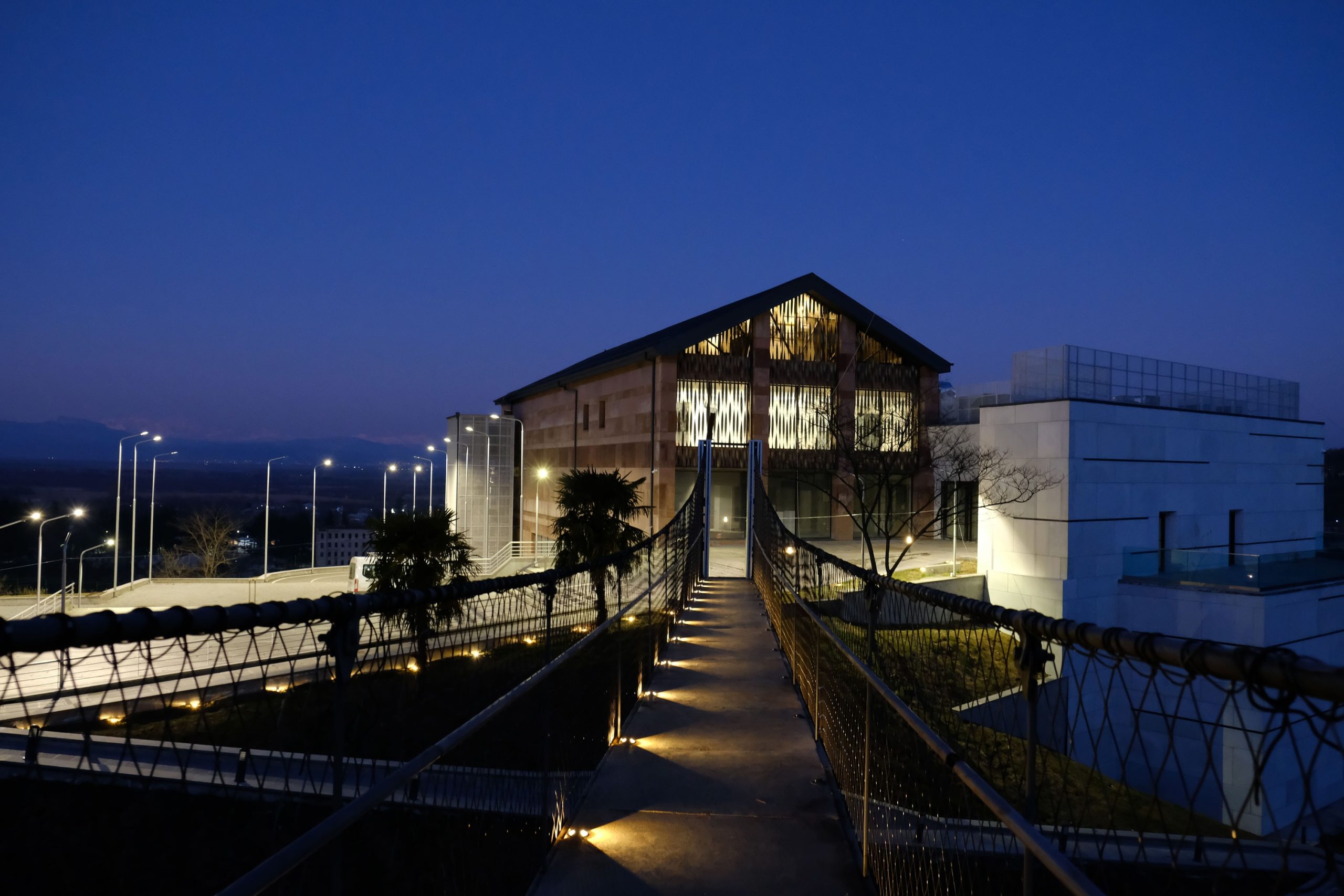
Part of the Georgian National Museum, the Otar Lordkipanidze Vani Archaeological Museum aims to shape new perspectives and understandings of the city-site of Vani, an archaeological site and religious centre linked to the mythical Golden Fleece. Its newly refurbished temple-like museum building reopened in 2020 with updated permanent exhibitions covering the eight centuries of Colchis’s political and administrative centre, the land of the Golden Fleece, and one of the outstanding temple cities of the Hellenistic world. In addition to its permanent and temporary exhibitions, the site-museum offers a broad range of educational programmes and serves as a research laboratory. As the region’s largest and only multifunctional public space, it is also a place for regional and international scientific meetings.
Given the significance of its collections as a segment of European heritage, the Vani Museum aims to raise awareness on broader issues on society, culture, and education. Local community members run the museum. Its volunteer projects and programmes are designed to involve the local community in the archaeological site’s safeguarding, preservation, and contemporary relevance. The museum offers a range of community programs to ensure the participation of younger audiences and disadvantaged community groups. These programs and activities range from summer school for children from families who cannot afford summer vacations to eco-literacy and civic education programs and workshops for local teachers on how to use the museum’s resources to address war, environmental crisis, or national identity and transculturalism.

THE PORTIMÃO MUSEUM PRIZE FOR WELCOMING, INCLUSION AND BELONGING 2023
Hernani, SPAIN
Chillida Leku
 VISIT WEBSITE
VISIT WEBSITE

Chillida Leku, an open-air museum in the Basque countryside in Spain, is dedicated to the work, life and memory of leading 20th-century Basque (and internationally celebrated) sculptor Eduardo Chillida. Chillida’s monumental works, ‘rooted in the territory,’ are on prominent display within the landscape. The site, including a large traditional Basque farmhouse, was bought by Chillida in the early 1980s and opened as a museum in 2000 to study, enjoy and disseminate Chillida’s work. It underwent a significant redevelopment in 2020.
The original Basque farmhouse is now an exhibition space. There are 40 monumental works by Chillida situated around the site. One hundred of his smaller-scale sculptures are on display inside the buildings.
Chillida aimed for the site to be a ‘meeting place,’ bringing people together. The museum, today, is dedicated to both, Chillida’s work, and his core values (known through his extensive writing) relating to human rights, social justice, music, and philosophy. Nowadays, the museum offers a wide range of programs and activities that utilize multi-sensory and multi-creative expression to promote dialogue and tolerance. Visitors are invited to reflect on the landscape and environment, and to learn more about the benefits of consuming locally produced food.
An art museum with an active social agenda, Chillida Leku is a place for all to ‘rest, to slow down – a place for health.’

THE MEYVAERT MUSEUM PRIZE FOR SUSTAINABILITY 2023
Burgrain, SWITZERLAND
The Swiss Museum of Agriculture
 VISIT WEBSITE
VISIT WEBSITE

In 2021, the Swiss Museum of Agriculture in Burgrain unveiled an entirely new eco-friendly building to house its permanent exhibition, workshop spaces, café and shop, and a hall for conferences and events. With an aim to offer a holistic platform about and for sustainability, its mission is to be the starting point of a collective discussion about climate, resources, changing behaviours, and planning a future together. The new building is part of a larger farmland complex with a pedagogical garden, an old organic farm and store, and an old refurbished shed that houses the museum’s old agriculture machinery.
Through its new exhibition, ‘Who is Agriculture?’, and its pedagogical programming offering plenty of fun and hands-on learning activities for children and adults, the museum provides historical and contemporary perspectives on agricultural practices through an integrated model of local sustainability. Its goal is to engage local communities to make them aware of where food comes from, what resources are used to grow it, and how much we waste. To that end, it seeks to play a role as a centralized connective regional hub: it brings together local producers, agriculture workers, and companies to create meaningful connections for citizens to understand how food is produced and who the key players in food production are.
The museum’s commitment and promotion of environmental sustainability aims to raise awareness and encourage responsible behaviour towards the environment in the entire region
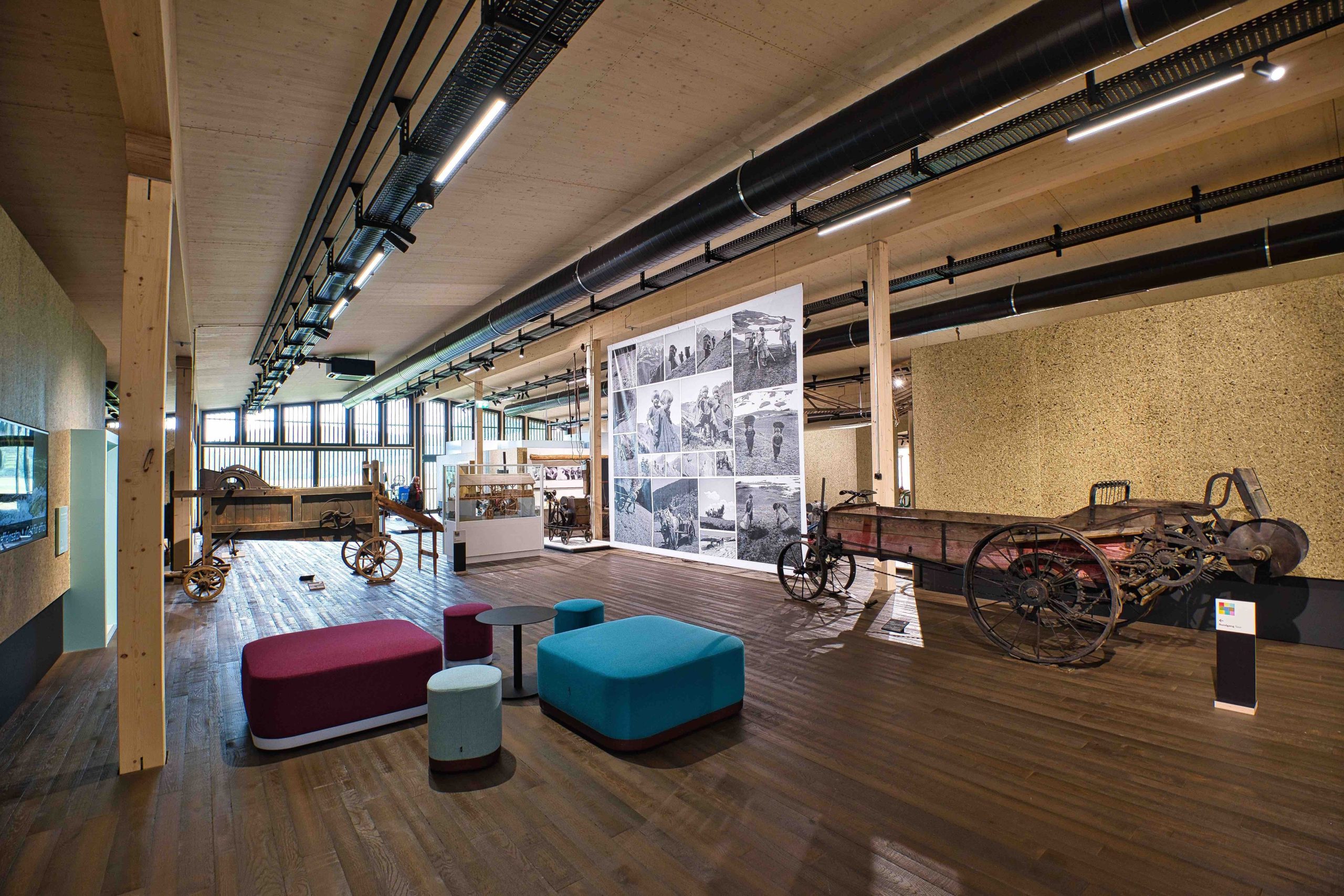
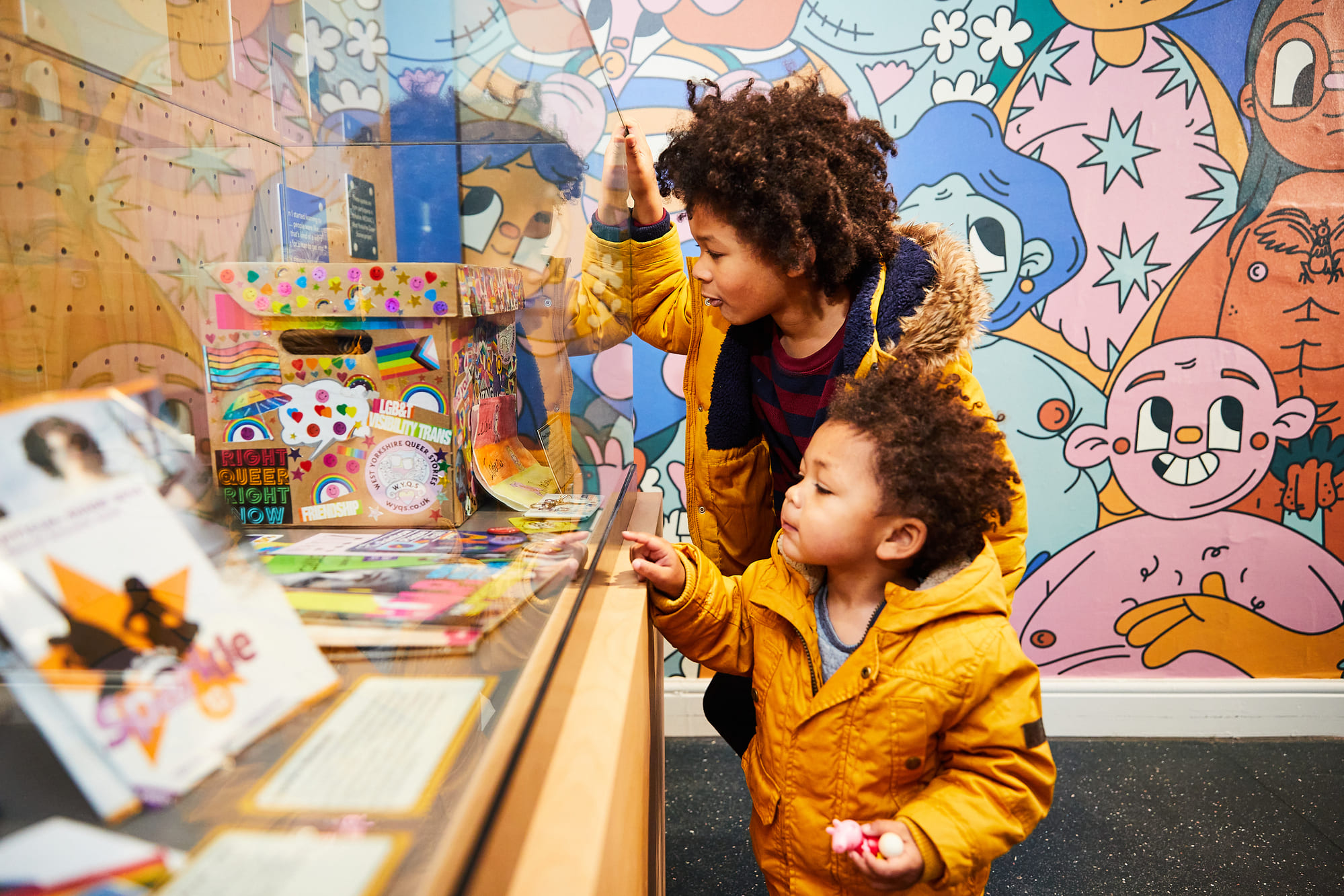
In 2021, the Thackray Museum of Medicine reopened after a major refurbishment. Its revised museum concept aims to provide the local community with a place of dialogue about healthcare and medicine. Besides being a learning space about past healthcare practices and medical heritage, the Thackray hopes to serve as a transformative element in Leeds, bringing together people from different backgrounds. It encourages its communities to think about healthcare practices and medicine, past and present, and how everyone can play a role in shaping a healthy future.
The museum is located inside St James’s University Hospital, where it maintains several strategic partnerships with various research centres and care units. Located next to the Harehills area of Leeds, one of the UK’s most deprived areas for employment, education, and housing, the museum aims to encourage participation from and representation of Leeds’s underprivileged communities. Its education and mediation team develops a wide selection of programmes and activities to ensure the involvement of the local population. Besides lending its spaces for local groups to host their own activities (from knitting workshops to language training groups), the museum has an active under 5s space where parents and children can spend quality time with one of the museum’s educators who proposes various learning activities. This way, children get familiarized with some of the exhibition’s themes, and parents get to know other parents in the neighbourhood and form a social network.
The museum has set up workshops and learning spaces for school children and adolescents to discuss individual and public health, health research, and the healthcare system. These inquiry-based areas provide active and hands-on opportunities to engage with some key questions about today’s and tomorrow’s healthcare.
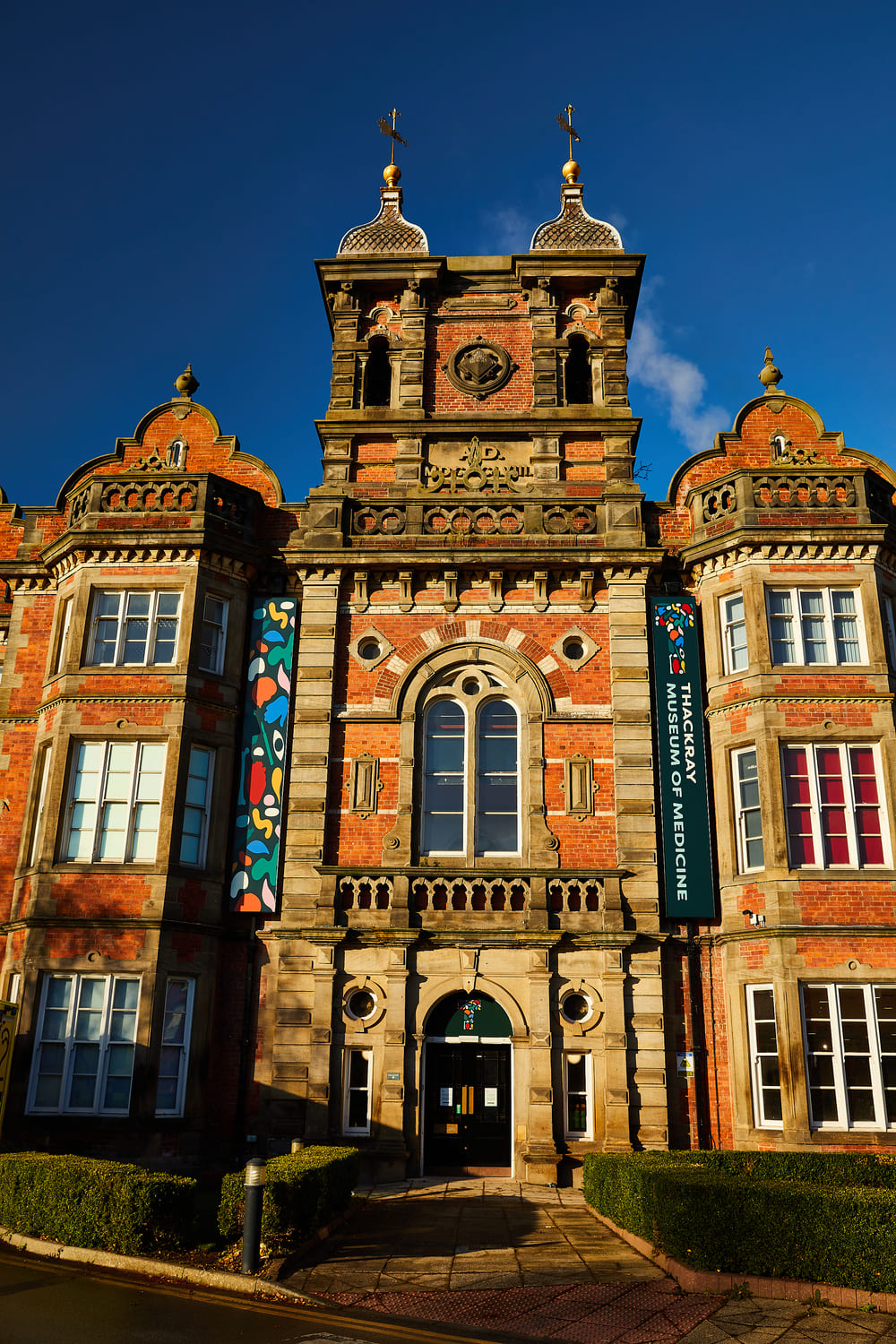
SPECIAL COMMENDATIONS
Tbilisi, GEORGIA
Ilia Chavchavadze Literary Memorial Museum. Museum of the Tbilisi Museums Union
 VISIT WEBSITE
VISIT WEBSITE
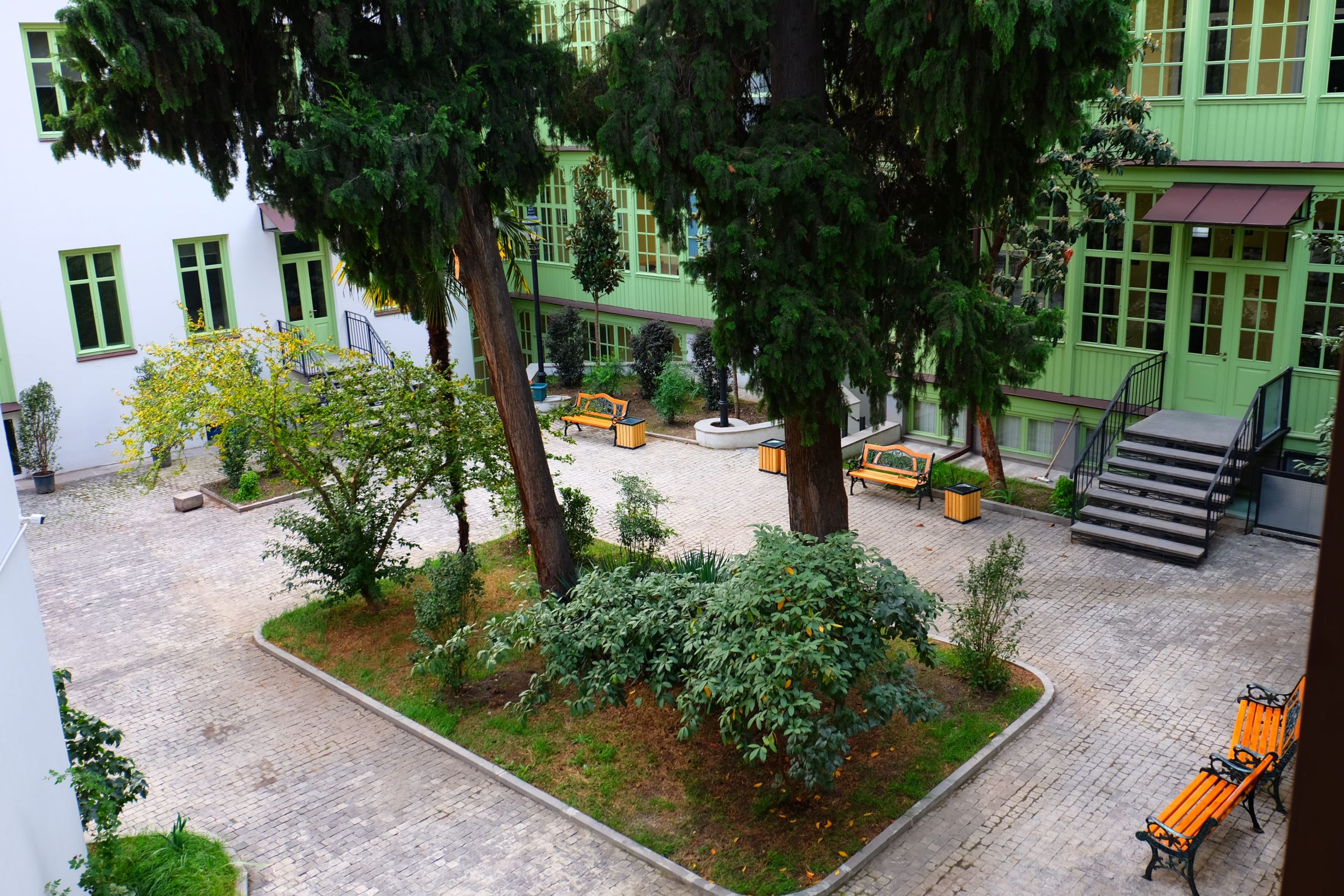
As one of eleven structural units of the Union of Tbilisi Municipal Museums, the Ilia Chavchavadze Literary-Memorial Museum is named after one of the most prominent public figures of the second half of 19th century in Georgia – Ilia Chavchavadze. Ilia Chavchavadze devoted himself to developing the Georgian public, political and economic life.
At the beginning of the 19th century, when Georgia underwent a period of Russian expansion, which led to the loss of statehood, abolition of church autocephaly, and a deep socio-economic crisis, Chavchavadze managed to maintain the statehood of the country while strengthening European commitments, values and the importance of public thinking.
The museum is dedicated to preserving the historical significance and memory of Georgia’s social, political, and cultural life during the 19th century – and Ilia Chavchavadze’s contribution to the country’s European aspirations. Chavchavadze transformed the house he lived in into a gathering place for a progressively minded community and a centre of important ongoing processes of the country. In this spirit, the Ilia Chavchavadze Literary-Memorial Museum shaped its mission: to enable visitors to reflect on the historical struggles and to be a welcoming and empowering place for contemporary Georgian society.
The museum offers an inclusive environment for people of different backgrounds in Tbilisi and beyond, which is also evident in the museum’s staffing model.
The museum also runs a cooperation programme with different resocialization-rehabilitation initiatives for juvenile convicts within the educational platform “Museum outside the Museum.” These programmes contribute to the museum’s mission to ensure that the emancipatory politics of Ilia Chavchavadze and his historical fight for democracy and social equality are translated into present-day Georgian society.

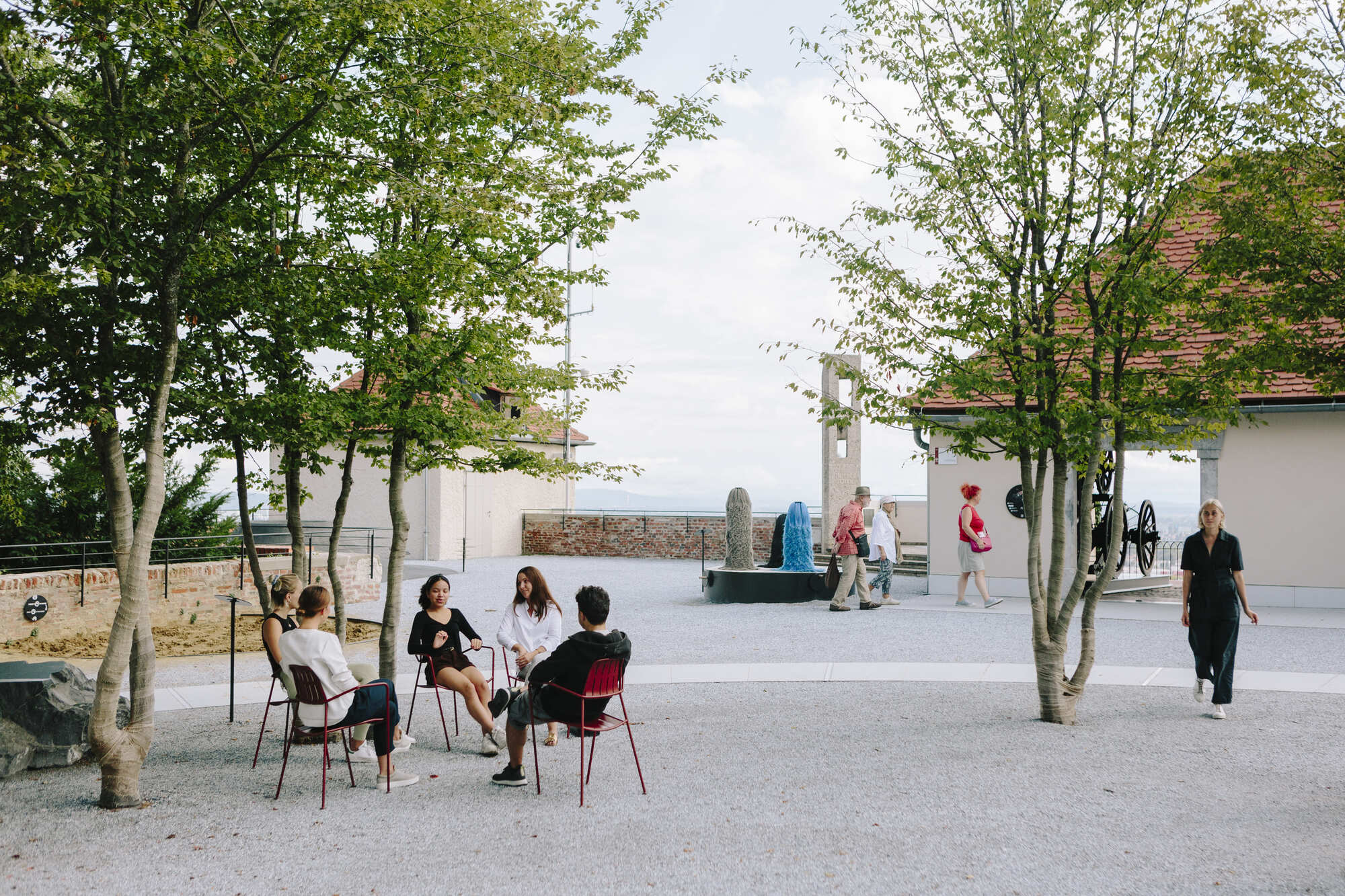
Located on the city’s former fortified hill, the Graz Museum Schlossberg aims to be an integral part of the city’s identity as a landmark and central destination for all its residents and visitors. It is a site of contemporary reflection on Graz’s cultural history, natural sciences, and archaeology. The Schlossberg presents an interdisciplinary and multi-perspective view of the history and significance of the Schlossberg – the site of the fortress – in four themed areas: ‘Garden of Wonders,’ ‘View of Graz,’ ‘Historical Trail,’ and ‘Schlossberg Story.’ The museum encourages all visitors to come and enjoy its courtyard and to visit the museum’s exhibition. To this end, the museum adopts an opening, welcoming, and inclusive attitude, also reflected in the architectural design.
All areas of the Graz Museum Schlossberg are accessible to all visitors. From adequate public transport connections, ensuring that disabled visitors can reach the top of the hill to wheelchair-accessible ramps inside the old casemates and underground pathways of the fortress, and tactile models and relief of the city as seen from the museum’s courtyard and balcony.


The FeliXart Museum in Drogenbos is a community museum that aims at providing a bridge between different linguistic communities. In 1996, the home of Flemish artist Felix de Boeck (1898-1995), a hero of Flemish identity and one of the pioneers of Abstraction in Europe, was donated to the local government. de Boeck’s works were part of a movement re-thinking the world after World War I, creating cooperatives and promoting back-to-nature veganism. Today, the museum is committed to removing boundaries between art, cultures, and languages. The gallery focuses on art and art research, comprehensively introducing de Boeck’s works and philosophy and changing exhibitions profiling other European Abstract artists, drawing in broader audiences.
With de Boeck’s home, studio, and land part of the museum complex, the museum aims to bring local communities together in using the land and buildings: the produce, the wildlife, and the farming. The museum proactively engages schoolchildren from across local linguistic divides in different activities, such as feeding the resident cows. At the same time, parents gather apples, bring in the hay, cook, preserve, repair, recycle, and create side by side.
By taking the artist’s life, work, philosophy, and creativity as inspiration, the museum seeks to explore and offer ways to build community across differences. It creates opportunities for people to come together and build, repair, and create – while claiming a shared space of belonging for the community.
The FeliXart Museum maintains a balance between, on the one hand, an art gallery that aims to appeal to a well-informed arts and research community and, on the other hand, an active, hands-on community-driven programme on simpler ways of living, working, growing, and eating, at a time of global insecurity.


The site of the Abbey of Payerne is both a historical and cultural site and a museum. The building itself – a magnificent and fully restored Abbey – is the most important object on display. As the largest Romanesque church in Switzerland, it allows visitors to discover its roots in the Cluniac network, which developed in the Middle Ages from Cluny in France and onto several European countries.
In Abbey of Payerne, traditional museum labels are replaced by short stories told by audio re-enactments of people connected to the objects on display. Its highly informative and humorous audio guide reveals the complex history of the thousand-year-old building by presenting the different stages of construction of the church and its sculpted decorations. Visitors can listen to (actor re-enactments of) gossip from the queen, get information about crimes, listen to medieval partitures, and learn from the stories of workers and monks who worked and lived there.
The overall goal is to provide visitors to the old church with a sensory, vivid, and emotional experience of the past and the people who lived there.


Depot Boijmans Van Beuningen is one of Rotterdam’s newly created landmarks that aims to make art storage publicly accessible. As the largest art institution in Rotterdam, with its monumental glass walls and open interior spaces, it seeks to foster openness, accessibility, and transparency. Depot offers a new approach and experience to art collections, conservation, and the idea of open city storage in an attempt to challenge what an art museum is and whom it is for.
With its collections steadily growing since 1849 to comprise more than 151,000 objects today – of which nearly 88,000 are prints and drawings – Depot has aimed at making the museum’s collections fully public through open storages, galleries, and targeted communication strategies. Visitors can book tours to the Depot’s different storage areas and experience behind-the-scenes processes, such as conservation labs and research projects, or see artworks from new angles, perspectives, and contexts. Various multimedia layers and a specially designed app help visitors contextualize the artworks on display and ask questions.
Depot is committed to diversity and inclusion, reflected in its staff’s diversity and dedicated educational activities and outreach programmes.
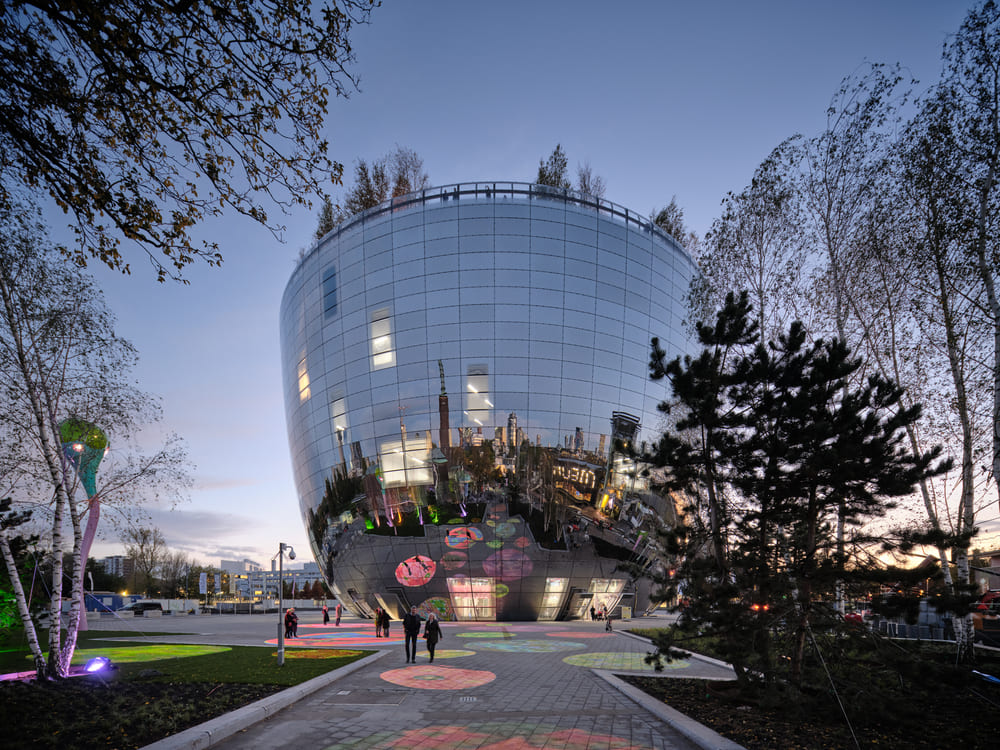
The EMYA Jury 2023
- Amina Krvavac (Chair), Executive Director, War Childhood Museum Sarajevo, Bosnia and Herzegovina
- Agnes Aljas, Research Secretary of the Estonian National Museum Tartu, Estonia
- Friedrich von Bose, Head of Research and Exhibitions at the State Ethnographic Collections Saxony in Leipzig, Dresden and Herrnhut, Leipzig, Germany
- Beat Hächler, Director, Swiss Alpine Museum Bern, Switzerland
- Bernadette Lynch, Independent museum scholar, writer, researcher; founder and chair of international Solidarity in Action Network and honorary research associate at University College London, United Kingdom
- Dominika Mroczkowska-Rusiniak, Cultural projects manager, National Institute for Museums and Public Collection Warsaw, Poland
- Adriana Munoz, Curator, National Museums of World Culture, Gothenburg, Sweden
- Mark O’Neill, Associate Professor, University of Glasgow, United Kingdom
- Mathieu Viau-Courville, Director of the Office de coopération et d’information muséales, University of Burgundy/Ministry of Higher Education and Research Dijon, France
Partners

CANDIDATES FOR THE EUROPEAN MUSEUM OF THE YEAR AWARDS 2023
- Graz Museum Schlossberg, Graz, AUSTRIA
- Andenne Museum Space, Andenne, BELGIUM
- FeliXart Museum, Drogenbos, BELGIUM
- Olympic Museum Sarajevo, Sarajevo, BOSNIA AND HERZEGOVINA
- City Museum of Rijeka, Rijeka, CROATIA
- Olive Museum Klis, Klis, CROATIA
- Museum of John Amos Comenius, Uhersky Brod, CZECHIA
- Workers Museum, Copenhagen, DENMARK
- University of Tartu Museum, Tartu, ESTONIA
- The Franciscans, Deauville, FRANCE
- Ilia Chavchavadze Literary Memorial Museum. Museum of the Tbilisi Museums Union, Tbilisi, GEORGIA
- Otar Lordkipanidze Vani Archeological Museum of Georgian National Museum, Vani, GEORGIA
- Deutsches Museum Nürnberg, Nürnberg, GERMANY
- Documentation Center for Displacement, Expulsion and Reconciliation, Berlin, GERMANY
- Sudeten German Museum, Munich, GERMANY
- Riga Stradiņš University Anatomy Museum, Riga, LATVIA
- Depot Boijmans Van Beuningen, Rotterdam, NETHERLANDS
- Queen Louise Adit Complex. Coal Mining Museum in Zabrze, Zabrze, POLAND
- Casa Fernando Pessoa, Lisbon, PORTUGAL
- Museum of Lagos | Dr. José Formosinho, Lagos, PORTUGAL
- Casa Batlló, Barcelona, SPAIN
- Chillida Leku, Hernani, SPAIN
- L'Etno, Valencian Museum of Ethnology, Valencia, SPAIN
- Abbey Church of Payerne, Payerne, SWITZERLAND
- Kunsthaus Zürich, Zurich, SWITZERLAND
- Atelier Audemars Piguet Museum, Le Chenit, SWITZERLAND
- Cantonal Fine Arts Museum, Lausanne, SWITZERLAND
- Museum of Verzasca Valley, Sonogno, SWITZERLAND
- Exhibition Space of the St Gall Abbey Archives, St. Gallen, SWITZERLAND
- Swiss Museum of Agriculture, Burgrain, SWITZERLAND
- 23,5 Hrant Dink Site of Memory, Istanbul, TÜRKIYE
- Police Museum, Ankara, TÜRKIYE
- Thackray Museum of Medicine, Leeds, UNITED KINGDOM
EMYA
Impressum
EUROPEAN MUSEUM FORUM
European Museum Forum is a Charitable Company Limited by guarantee,
registered in England and Wales, registration no 07243034, charity no 1136790,
registered office World Museum Liverpool, William Brown Street, Liverpool L3 8EN
EMF website
www.europeanforum.museum
Council of Europe website
http://website-pace.net/web/apce/the-museum-prize
European Museum of the Year Awards
The Winners 2023
Published by: European Museum Forum
Edited by: Mathieu Viau-Courville, Amina Krvavac, Dominika Mroczkowska-Rusiniak
Graphic Layout: Submarine, Sarajevo, Bosnia and Herzegovina


